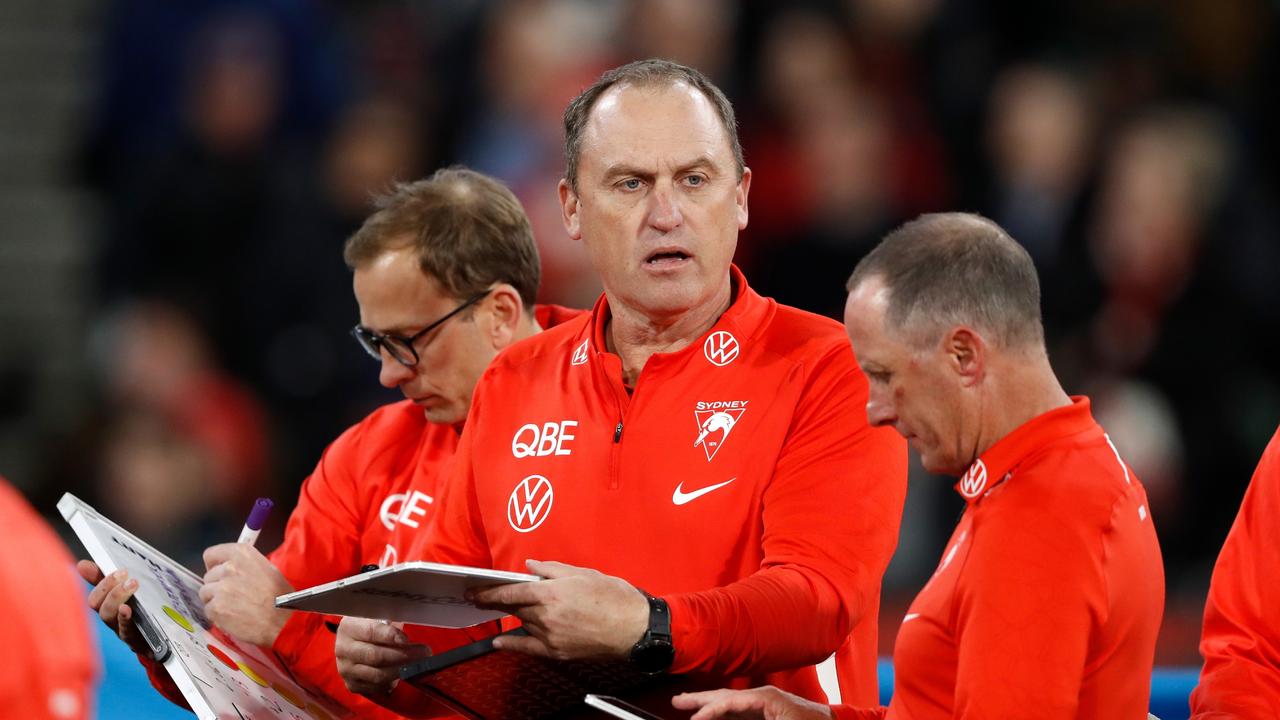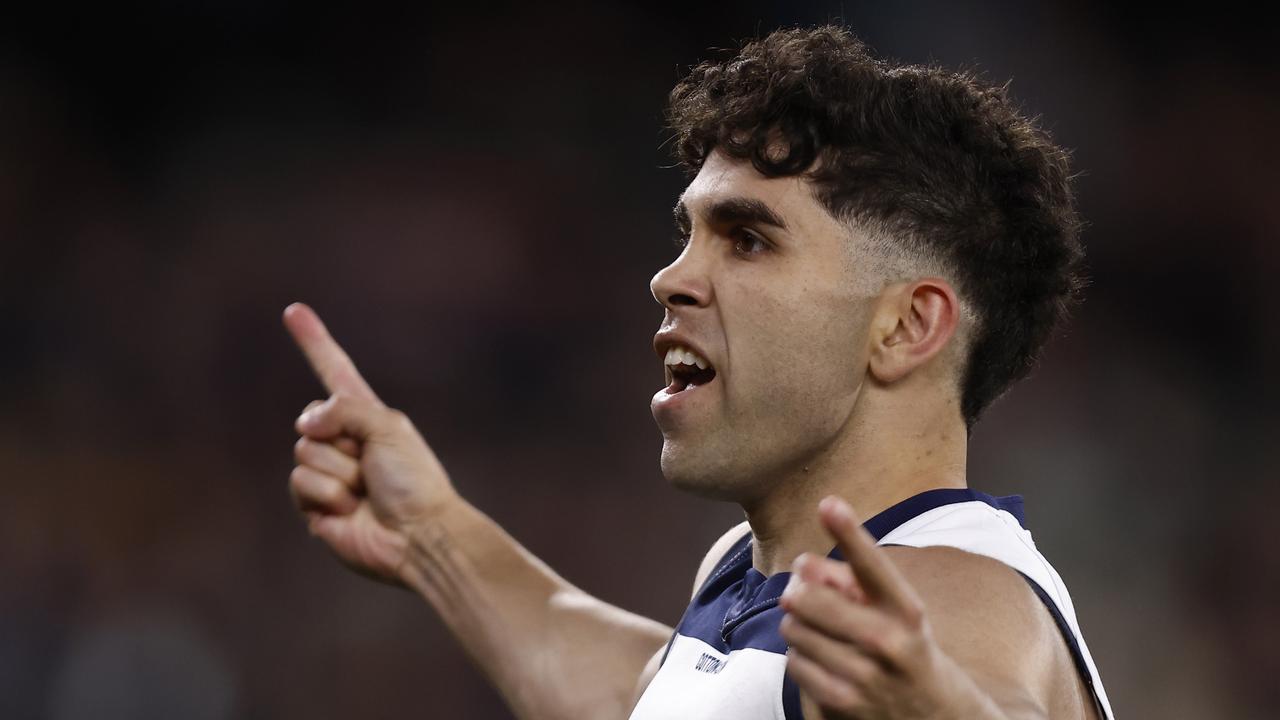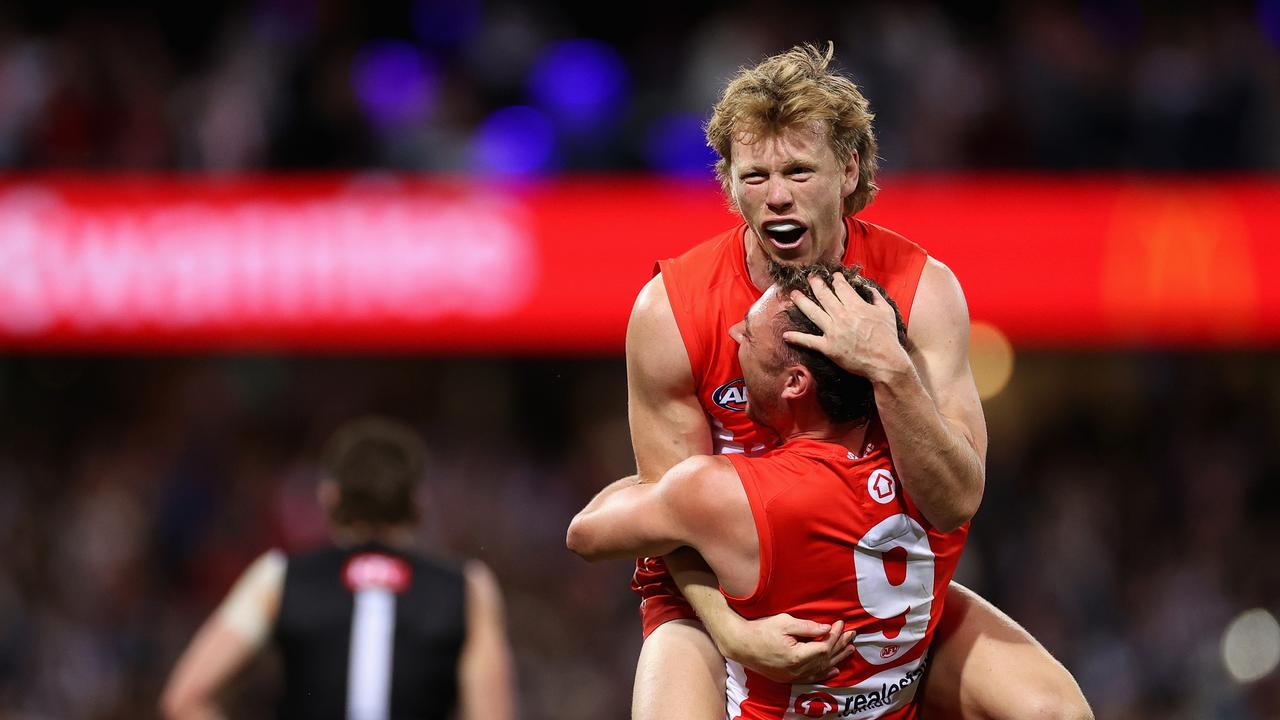Mick Malthouse: Key areas that will decide AFL grand final
Mick Malthouse has coached both winning and losing AFL grand final teams. He give his recipe for getting the upper hand in the big one.

It is such an honour to be involved in AFL grand final week. But for the two coaches it can initially be very daunting.
With so much going on your instinct is to protect your players from being burdened by the week. So many people wanting a piece of them and interfering with their routines. But it is important not to be overprotective.
Allow your players to enjoy their week, while staying focused at the appropriate times. You want them relaxed.
They will work to your mood, so it is equally as important that your demeanour is one of controlled excitement.

The internal doubt that drives you to make sure that every “i” is dotted and every “t” is crossed, cannot be allowed to permeate your player group. Nor any concerns you have. It’s important that your staff and those around the players also understand their roles and remain buoyant but calm.
Normalise the processes.
Rely on your wonderful football managers to take the pressure off you regarding the peripheral things that do matter to a lot of people, but don’t need to be consuming your time.
I always reminded myself throughout my career that the 100,000 spectators at the MCG are there to see the players play, not the coach’s coach. So, ensure that your players don’t think about the game too much, too early in the week. That they are prepared. Relaxed. Excited. And they will be ready to go when they run down the race.
GEELONG
GEELONG has been written off by many experts in the past, and quite possibly by some of its own supporters, by being considered too old for too long. But the Cats have shown they have a great capacity to overcome any hurdles thrown at them.
They are highly predictable, which makes them dangerous. They are also a side that doesn’t need to dominate the possession rate to be effective.
Without doubt, Geelong has the best forward line in the competition. It keeps its back six in position, so it relies heavily on its midfield to be competitive and gain enough of the football to give its forwards an above average chance to score. It’s not only Tom Hawkins and Jeremy Cameron that the opposing defenders must contend with, but also Tyson Stengle (a revelation as a small forward), Brad Close (a workman), Gary Rohan (an X-factor), and Patrick Dangerfield (always dangerous inside 50).

The ruck is the one area where the Cats may have a deficiency, but Rhys Stanley and Mark Blicavs are highly competitive. As long as that pairing remains competitive Cameron Guthrie, Tom Atkins and captain courageous Joel Selwood can all go to work.
The Cats also have a player up their sleeve in Mark O’Connor, who can go back or take on a tagging role through the middle.
Tom Stewart and Mitch Duncan will marshal the backline.
Geelong has done enough by beating Collingwood and Brisbane to go into the grand final as deserving favourites. Its game style has gone from pedestrian (the 50m walking title) to elite, by moving the ball with more pace (but still not the 100m sprint by any stretch.)
With such a dangerous and potent attack, the ball needs only to enter the Cats’ forward 50 more times than the opposition for Geelong to have a significant victory.
Sydney’s backline may work collectively against the Cats’ forwards, but inevitably there will be a miss-match that can, and will, be exploited.

Geelong is up against one of the toughest teams in the competition in the grand final. There is going to be little room, or time, to use the ball. This is where players such as Mitch Duncan, Isaac Smith and Cameron Guthrie will need to control the tempo.
Jake Kolodjashnij erased any doubt over his knee injury with a season-best outing against the Lions in the back half, which allowed Zach Tuohy and Duncan to play elsewhere.
Geelong was possibly the most settled team going into the finals, and now with two victories under its belt, it can go into the grand final with the confidence that the players know each other’s moves perfectly.
This is Chris Scott’s third grand final in 12 years – and he’s seen seven preliminary finals. He’s experienced a grand final win (2011) and a grand final loss (2020) as coach. He knows what it takes to win a flag. But so too does John Longmire, with a Swans premiership in 2012.
SYDNEY
SYDNEY’S toughness has been paramount to its victories. It plays finals-type football every time it takes to the ground. It denies its opponents space and time.
The Swans have some wonderful players in their team, no doubt, but it’s their 15th to 22nd player that makes the difference.
They play predictable football for each other. They get numbers to the ball, support each other in the air and play highly disciplined football.
The impressive McCartin brothers, Paddy and Tom, are well recognised, however, Dane Rampe has been a rock-solid defender for Sydney for many years and seems to be able to control the tempo of the backline.
Nick Blakey and Jake Lloyd are both ball-getters on the half backline. Blakey with a penetrating left-foot kick sets up numerous opportunities deep in the Swans forward line.
Ruckman Tom Hickey, the journeyman, leaves us with no doubt that he will give his all, which allows the midfield to get to work.
Led by Luke Parker, the mix and match of the midfield with James Rowbottom, Chad Warner and Callum Mills provides ball-getting power, plus the ability to stop the opposition (which they did against Jordan De Goey and Scott Pendlebury on Saturday) while winning enough of the football to supply a dangerous forward line.

The ever-dangerous Tom Papley and Will Hayward, the mercurial Isaac Heeney, and not forgetting Lance Franklin, are as potentially potent as any forward line. Give any space to Franklin and he will destroy you. He has needed a big finals performance, with an outstanding career that has unfortunately been littered with finals failures.
The predictability factor of Sydney has given the team the confidence to know what to do next, no matter what happens. The players trust in each other to move the ball well and quickly.
The one area that could be of concern for the Swans is that in each line they need their very good players to be very good, and their support players to perform at their best standard – never below it.
It is the opposition that quite often determines who the bottom eight players are, but Sydney has so far prevailed because it has not been exposed at the bottom end.
Callum Mills has been extraordinary as a young leader. He will once again need to set the example, engage the opposition, and at worst, even up the contest.
Finals games – the grand final in particular – are won and lost through the efforts in the middle. Great forward lines can be starved of the football in finals.
To counter this, the Swans forwards will need to come up the ground to meet the contests. As much as they’ve played good football on the MCG, the SCG is shorter. Franklin and crew will need to be on their bikes against Geelong to support the midfield in delivering the ball in their forward fifty, or be denied scoring opportunities.
If Reid does not play because of injury, the Swans are in a real quandary because Franklin is not an aerialist and Geelong dominates this area all over the ground. McDonald, the other tall, has had an indifferent finals series and is not the solution.
Also, Geelong has a massive advantage with the spare day, and a soft preliminary final win. Whereas recovery will be paramount for Sydney after a tough game that went to the wire.
The Cats couldn’t have wished for a better lead-up final for their opponents, and for that reason I’ll tip Geelong.
Watch every match prior to the AFL grand final Live & Ad-Break Free In-Play on Kayo. New to Kayo? Start your free trial now >





